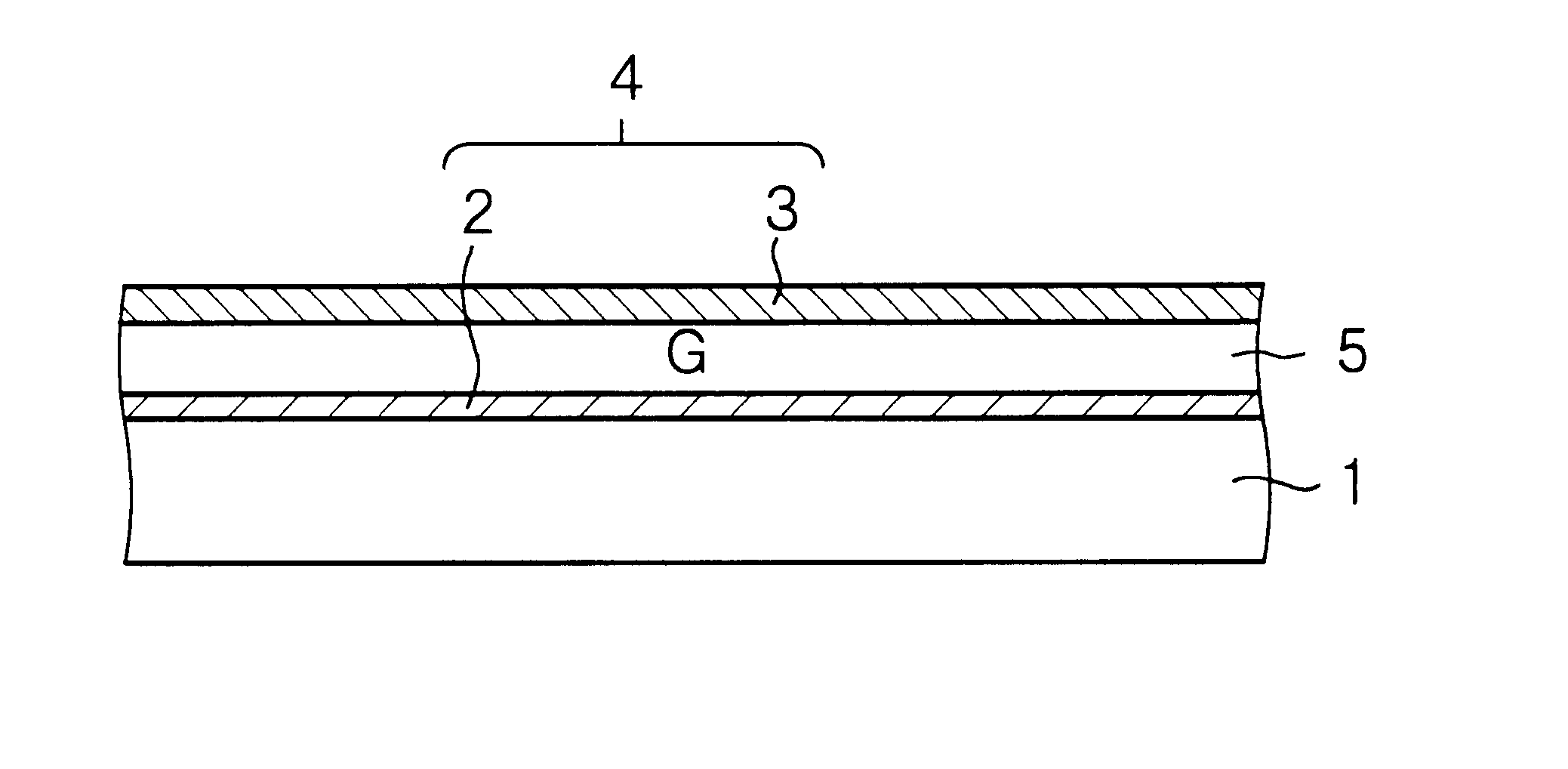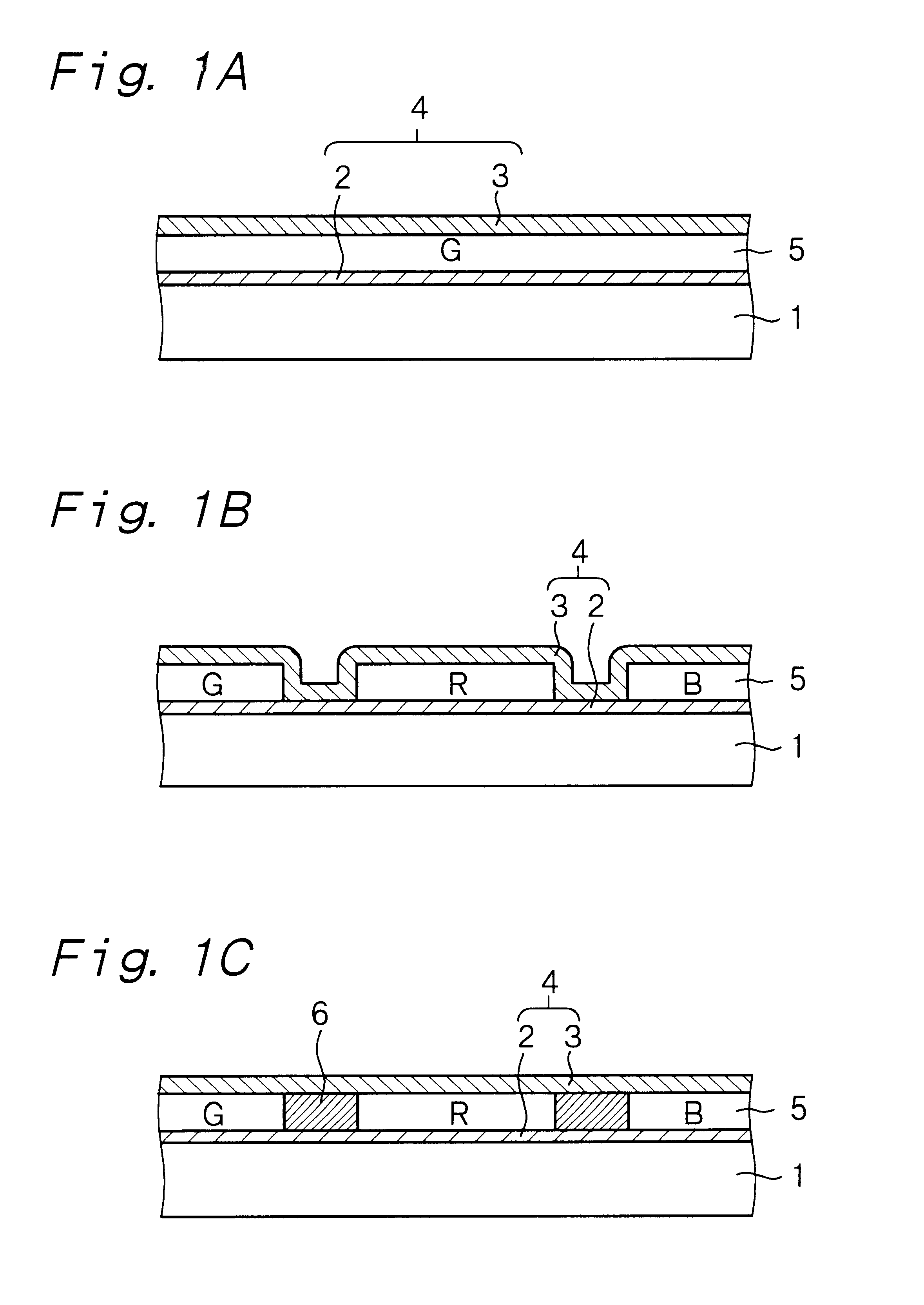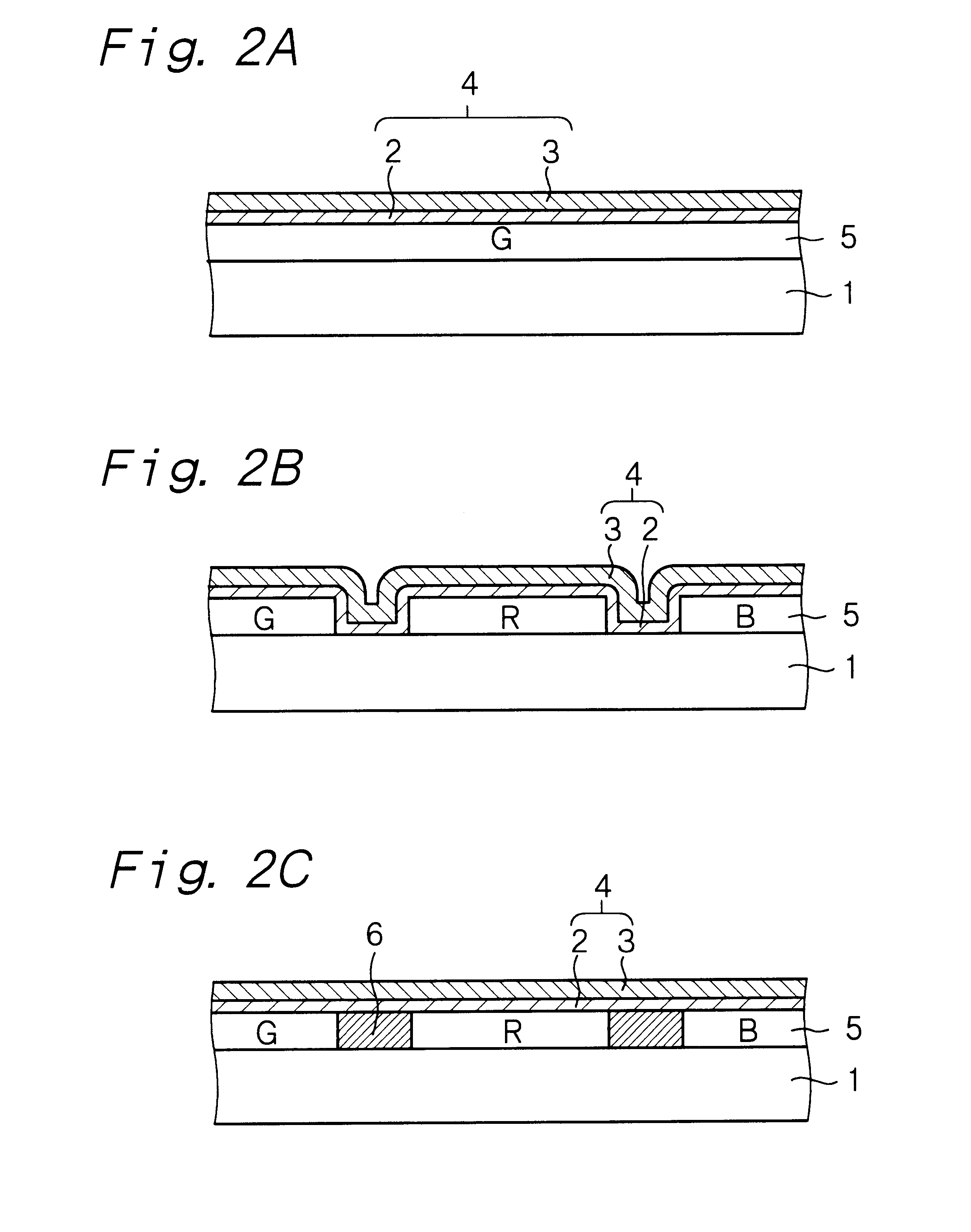Display panel and display device to which the display panel is applied
a display panel and display device technology, applied in the field of display panel and display device to which the display is applied, can solve the problems of affecting the performance of the display panel, the effect of reducing the fluorescence layer caused by the charge cannot be prevented, and the image quality is highly likely to be affected
- Summary
- Abstract
- Description
- Claims
- Application Information
AI Technical Summary
Benefits of technology
Problems solved by technology
Method used
Image
Examples
example 1
is concerned with a display panel and a display device according to the first aspect of the present invention. FIGS. 1A to 1C show schematic partial cross-sectional views of the display panels of the case (i), FIGS. 2A to 2C show schematic partial cross-sectional views of the display panels of the case (ii), FIG. 3 shows a conceptual view of the display device, and FIGS. 4A and 4B show brightness lifetime characteristics of the display devices.
FIGS. 1A to 1C show configuration examples of three types of the display panels belonging to the case (i). An anode electrode 4 comprises a lower electrode 2 and an upper electrode 3, the lower electrode 2 is formed on a substrate 1, a fluorescence layer 5 is formed on the lower electrode 2, and the upper electrode 3 is formed on the fluorescence layer 5. The display panel shown in FIG. 1A is intended to be a display panel for monochromatic displaying, and the fluorescence layer for emitting light, for example, of green (G) is formed on the en...
example 2
Example 2 is concerned with a display panel according to the second-C constitution and a display device according to the second aspect of the present invention. FIG. 5A is a schematic partial plan view and FIGS. 5B to 5E and FIGS. 6A to 6D are schematic partial cross-sectional views of the display panels of Example 2. FIG. 7 shows a conceptual view of the display device. FIGS. 8A to 8C, FIGS. 9A to 9D, FIGS. 10A to 10E and FIGS. 11A to 11D show patterns of combinations of an independent electrode and a substrate.
In a display panel 100 of Example 2, an anode electrode comprises a plurality of independent electrodes 13 so formed as to correspond to a predetermined number of unit fluorescence layers as shown in FIG. 5A. A plurality of these independent electrodes 13 are arranged as a whole to nearly cover the effective region. A power supply line is formed on a rectangular substrate 10 composed, for example, of glass, and the power supply line comprises one main line 14 extending in th...
example 3
Example 3 is concerned with a display panel as other examples of the display panel of the second-C constitution, in which the independent electrodes are formed such that one independent electrode corresponds to one unit fluorescence layer. FIG. 12A shows a schematic plan view of the display panel of Example 3. As shown in FIG. 12A, the anode electrode of the display panel 101 comprises a plurality of independent electrodes 113 which are formed in the form of a matrix such that the independent electrodes are so formed as to correspond to the unit fluorescence layers 112R, 112G, . . . respectively. A plurality of these independent electrodes 113 as a whole are arranged to nearly cover the effective region. The power supply line is formed on the rectangular substrate 110 composed, for example, of glass, and it comprises one main line 114 extending in the width direction of the rectangular substrate 110 and a plurality of branch lines 124 extending from the main line 114 and in the colu...
PUM
 Login to View More
Login to View More Abstract
Description
Claims
Application Information
 Login to View More
Login to View More - R&D
- Intellectual Property
- Life Sciences
- Materials
- Tech Scout
- Unparalleled Data Quality
- Higher Quality Content
- 60% Fewer Hallucinations
Browse by: Latest US Patents, China's latest patents, Technical Efficacy Thesaurus, Application Domain, Technology Topic, Popular Technical Reports.
© 2025 PatSnap. All rights reserved.Legal|Privacy policy|Modern Slavery Act Transparency Statement|Sitemap|About US| Contact US: help@patsnap.com



